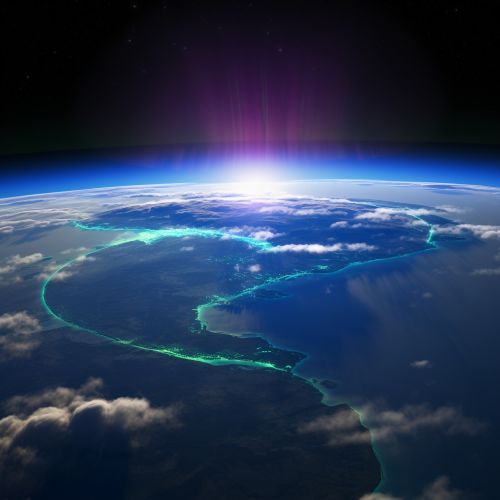UV Radiation and Its Effects
Introduction
Ultraviolet (UV) radiation is a form of electromagnetic energy that sits between visible light and X-rays in the electromagnetic spectrum. This type of radiation is emitted by the Sun and artificial sources like tanning beds. UV radiation is divided into three types: UVA, UVB, and UVC, each having different wavelengths and, consequently, varying impacts on human health and the environment.
Types of UV Radiation
UV radiation is classified into three types based on wavelength: UVA, UVB, and UVC.
UVA Radiation
UVA radiation has the longest wavelength and accounts for about 95% of the UV radiation reaching the Earth's surface. It can penetrate deep into the skin and is responsible for immediate tanning. It also contributes to skin ageing and wrinkling.
UVB Radiation
UVB radiation, with medium-wavelength, is biologically active and can penetrate the superficial skin layers. It is responsible for delayed tanning and burning; in addition to these short-term effects it enhances skin ageing and significantly promotes the development of skin cancer.
UVC Radiation
UVC radiation has the shortest wavelength and is almost completely absorbed by the Earth's atmosphere. Therefore, it does not reach the Earth's surface and is not normally a risk factor for skin cancer. However, UVC radiation can be found in artificial sources such as mercury arc lamps and germicidal lamps.


Effects of UV Radiation
UV radiation, particularly UVA and UVB, has both beneficial and harmful effects on human health and the environment.
Effects on Human Health
UV radiation plays an essential role in the production of vitamin D, a nutrient vital for healthy bones and teeth, and may also have other health benefits. However, overexposure to UV radiation can lead to harmful effects including:
- Sunburn: This is the most immediate response to excessive UV radiation exposure.
- Skin cancer: Long-term exposure to UV radiation can lead to skin cancer, including melanoma which is the most dangerous type.
- Premature ageing of the skin: Over time, UV radiation can cause the skin to become prematurely aged, wrinkled, and leathery.
- Eye damage: UV radiation can cause damage to the eyes and result in conditions such as cataracts.
Effects on the Environment
UV radiation also affects the environment, impacting both terrestrial and aquatic ecosystems.
- Climate Change: UV radiation plays a role in the chemistry of the atmosphere and contributes to climate change.
- Damage to aquatic ecosystems: UV radiation can affect the productivity of phytoplankton, which forms the basis of aquatic food webs.
Protection from UV Radiation
Protection from UV radiation is important to prevent the harmful effects of overexposure. This can be achieved through various methods:
- Sunscreen: Sunscreens with a high sun protection factor (SPF) can protect the skin from UV radiation.
- Clothing: Wearing protective clothing, including hats and sunglasses, can shield the skin and eyes from UV radiation.
- Shade: Seeking shade during peak UV radiation times, usually between 10 am and 4 pm, can help to reduce UV radiation exposure.
